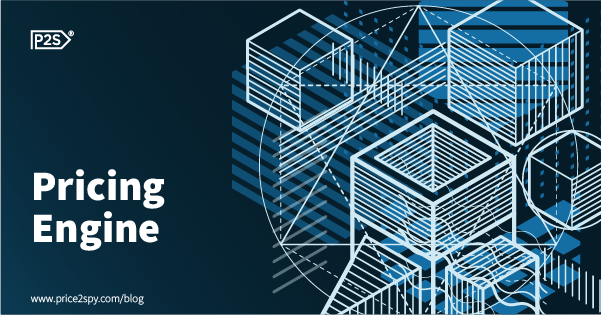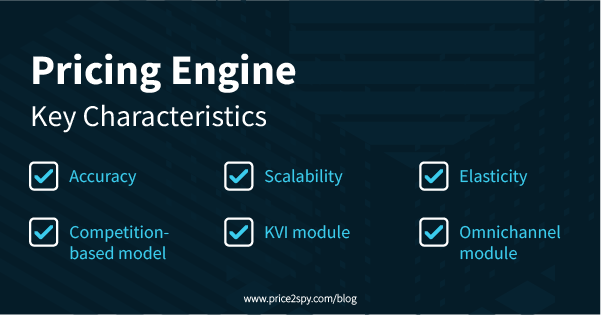
How a pricing engine can help you increase eCommerce sales
Change and adaptation are two notions that perhaps describe the best what is it like to work in eCommerce in recent years.
This is further intensified by entering a new phase of adopting AI-powered automation.
Moreover, IBM states that over 40% of the organizations are already using some of the automated solutions. One of the most used solutions, especially in eCommerce, is the pricing engine.

If you do not know what a pricing engine is, worry not! We are here to explain and let you know how it helps eCommerce business owners overcome pricing hurdles and deal with competition more easily.
Let’s take a deep dive and see what this term means!
What is a pricing engine?
The pricing engine is a software solution that takes one’s own and competitors’ prices, together with costs related to product manufacturing and purchasing, and many many other factors as input, and then calculates pricing suggestions as an output.
Competitors’ prices are a crucial part of this equation and most pricing engine solutions offer competitor price monitoring service as a standard feature.
Thus, the pricing engine allows you to automate your pricing decisions and harmonize your prices across different channels. It is worth noting that there are some pricing engines that also offer the possibility of only calculating the repricing suggestions, without implementing them for you. This is useful if you still don’t have complete trust in the tool.
That being said, what are the main attributes to look for in a pricing engine solution?
Besides the accuracy, a good pricing engine also has to be highly scalable and flexible. That means that it needs to be able to include pricing rules, discounts, promotions, returns, and any other factor that can influence the final product price.
What makes a good pricing engine?
The shopping experience nowadays is highly dynamic. Retailers are trying to make it as personalized as possible, thus the price changes reflect market trends and fluctuations.
According to McKinsey, retailers usually change product prices around 3 times a day, while some of them do it even 12 times! Needless to say, that would be impossible without a complex tech solution.

But, not every pricing engine design is suitable for every business. The right design will depend on your goals, limitations, and business size. However, some of the universal models are the following:
- Elasticity – calculating the way in which the price changes can affect the demand.
- Competition-based model – price changes are based on market trends and competitor actions. Usually, you can decide on a couple of the most important competitors, compare their product prices, and keep track of their actions. Depending on what you want to achieve, the price engine can help you set your prices above, below, or exactly as the competitors’.
- KVI (Key-value item) module – helps define which product is the key-value item, and how it affects the overall price perception
- Omnichannel module – allows you to adjunct your prices across all your channels both offline and online.
Can customers benefit from pricing engines as well?
Yes, customers can benefit if businesses use pricing engines because such an approach means a win-win situation for every party involved. It is not a zero-sum game.
Let’s clear things up a bit.
In essence, the way it benefits everyone is by retailers getting to increase their profits while customers get a more personalized shopping experience, both in terms of prices and products shown.
Maybe you weren’t aware, but according to SalesForce, only 12% of the marketers are satisfied with the offered level of personalization. That’s where a pricing engine can step in.
Pricing engine can help you in the following ways:
Price – as we’ve said, prices can be dynamic and depend on numerous factors such as market conditions, sales channels, store location, etc. Finding the price that suits both the customer and the company is a challenge, but that’s exactly what pricing engines are meant to help with.
Special offers and promotions – are also unstable components. Different promotions can be valid through different times of the year, while special offers can be used as a way of gifts and benefits for long-term customers. Knowing when to use them and how to respond to similar competitors’ actions is one of the things that price engines can help you with.
Everything mentioned so far speaks in favor of pricing engines. Then why only 40% of eCommerce professionals are using it?
Common price engine misconceptions
Even though pricing engines bring many benefits, some retailers and brands are still hesitant to use it.
Why is that the case?
There are some common misconceptions about pricing engines that can put people off.
Pricing engines only lower the prices
Many retailers believe that the main purpose of a price engine is to lower the prices to attract more customers. However, some retailers don’t face fierce competition, therefore, they don’t need to drop their prices to look more competitive. Well, a great thing about pricing engines is that they do so much more than lowering the prices.
A well-developed pricing tool will recognize when there is no need for a decrease. If, for example, you’re the only seller, or have limited competition, this tool will advise you on how to capitalize on that position. Maybe there is room for increasing the prices without endangering your market position.
Pricing engines lead to price wars
Wrong. Many retailers fear that automated pricing solutions will just blindly follow what’s happening on the market. Retailers think that if their competitor is constantly lowering the prices, price engines will take that as a hint to respond in the same way, which will lead to a price war.
That’s far from the truth. In fact, pricing tools can prevent such occurrences.
One of the very important price engine aspects is setting minimum and maximum prices. Price fluctuations are inevitable, but if they’re too big, they can jeopardize your brand image. That’s why price engines have developed a feature called MAP minimum advertised price, which will inform you when a MAP policy has been violated.
Price changes will be too frequent
Also not true.
Pricing engines will help you to understand what’s going on in the market and get competitive insights. The gathered pricing data will indicate when and how often you should perform price changes.
In cases where the market is highly competitive, prices tend to fluctuate a lot. However, there are also cases where monitoring the prices once a day will do the trick. To avoid making these decisions solely based on your assumptions, price engines will provide you the accurate and timely data. There will be no guessing because the numbers don’t lie.
Dynamic pricing is a complete necessity of today’s eCommerce world, so there’s no need to worry if you select the right price monitoring tool.
What the future holds for pricing engines?
Retailers that are still focusing on traditional approaches are struggling to keep pace with the competition. A study done by Capgemini showed that more than a quarter of 250 global retailers are integrating AI in their businesses. Moreover, they expect that price engines based on AI will save around $340 billion annually!
Long gone are the days when you could only be a spectator of market shifts. Today’s eCommerce world requires you to take a proactive approach. Make sure you’re not left behind!
What are your thoughts on pricing engines? Is your business already using some of them?
We would like to hear more about it in the comments.



